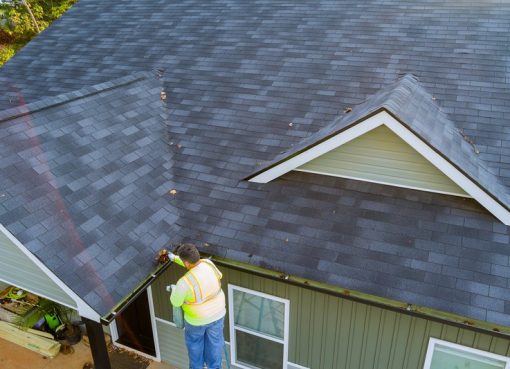What Are the Latest Trends in Commercial Landscape Design?

Stepping outside into a beautifully designed commercial landscape can invigorate the senses, improve moods, and even bolster a brand’s identity. Knowing what’s trending in commercial landscape design can give you a competitive edge and transform a space from ordinary to extraordinary. In this article, we’ll explore the latest trends that are shaping the aesthetics and function of outdoor commercial spaces.
What Are Commercial Landscape Services?
Commercial landscaping services encompass an array of outdoor design and maintenance services for businesses, public spaces, and large residential complexes. These professionals work to create cohesive, sustainable, and often breathtaking environments.
One aspect of these services that adds a festive touch to any commercial property is commercial holiday decor. This is especially significant during specific times of the year when businesses want to engage with the festive season, greeting clients and employees with stunning seasonal displays that boost the festive spirit.
Latest Trends in Commercial Landscape Design
1. Eco-friendly and Sustainable Landscapes
Environmental considerations are at the forefront of many industries, and commercial landscape design is no exception. Let’s break this down:
-
Natural Resource Conservation: Using native plants that require less water and adapting to xeriscaping—landscaping designed to reduce or eliminate the need for supplemental water from irrigation.
-
Organic Practices: Reducing the use of chemicals and fertilizers while opting for organic alternatives that are better for the environment.
-
Stormwater Management: Implementing features like green roofs, bioswales, and rain gardens to manage runoff in an eco-friendly manner.
These practices help the environment, often reduce long-term maintenance costs, and comply with local regulations that reward green initiatives.
2. Biophilic Design Elements
Biophilia refers to humanity’s innate connection to nature. Biophilic design integrates this idea into commercial landscapes by bringing natural elements closer and making them a fundamental aspect of the design. Think of living green walls, natural lighting, and indoor gardens. Such designs aim to enhance individuals’ well-being by bringing the outdoors inside.
3. Multifunctional Spaces
Gone are the days when outdoor commercial spaces were just for curb appeal. Nowadays, these areas serve multiple purposes:
-
Outdoor Work Areas: Many companies are creating spaces for employees to work outside, with Wi-Fi, comfortable seating, and even power outlets.
-
Recreational Spaces: Areas for employees and visitors to relax, eat, and socialize that may include features like walking paths, water features, or sports courts.
-
Event Venues: Flexible open spaces that can host events, markets, or other gatherings.
When spaces can transform to meet various needs, they offer value beyond aesthetics and can be a selling point for businesses.
4. Smart Irrigation Technologies
Water conservation is a major aspect of sustainability, and smart irrigation technology is leading the charge. Systems nowadays can monitor weather patterns, soil conditions, and even plant water use. They can adjust the watering schedule and volume accordingly, ensuring that plants receive the optimal amount of water with minimal waste.
The central control systems for these smart irrigation technologies are often integrated with mobile applications. This allows property managers to monitor and adjust irrigation from anywhere, further enhancing convenience and efficiency in landscape management.
5. Edible Landscaping
This trend involves incorporating edible plants—like herbs, fruit trees, and vegetable patches—into the landscape. It’s hitting all the right notes by promoting sustainability, encouraging healthy eating, and providing an engaging talking point. Plus, growing your produce can save money on landscaping costs.
Businesses with a focus on health and wellness, especially those in the hospitality industry, are taking advantage of this trend. They use their edible landscape to supply their kitchens, providing guests with the freshest ingredients possible straight from their “backyard.”
6. Innovative Use of Colors and Textures
Commercial landscapes are getting bolder with their use of colors and textures. Expect to see vibrant color palettes and a variety of textures in plants and materials. This isn’t just about being trendy; color theory suggests that certain colors can influence mood and behavior, which can be strategically used in these spaces.
Landscapes are also becoming more dynamic, with plants and features that change throughout the seasons. This creates an evolving landscape that encourages return visits to see what’s new.
7. Themed Landscaping
Some businesses are telling their brand story through themed landscaping. This could mean a technology company integrating modern, futuristic elements into their outdoor space or a history-themed hotel creating landscaping that reflects the past. It’s about creating an immersive experience for visitors and employees alike.
8. Seamless Indoor-Outdoor Transitions
Blurring the lines between the indoors and outdoors is another key trend. This is seen in designs that incorporate similar styles and materials. The goal is a cohesive flow that extends the usable space of a property and creates an inviting atmosphere that encourages movement between the two.
Architectural elements like large glass walls and skylights can help accomplish this seamless transition, allowing natural light to pour in and offering views of the outside landscape from indoors.
Final Thoughts
In a world where first impressions and lasting connections are crucial, commercial landscape design continues to evolve and push the boundaries of creativity and sustainability. From eco-friendly practices to smart technologies and multifunctional spaces, the trends we’ve explored offer something for every commercial property looking to stay ahead of the curve. Incorporating these trends offers a way to showcase a brand’s commitment to innovation and the well-being of the environment and its people.



